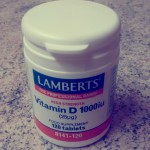 The insufficiency is a relatively new classification in the nutritional literature. Generally, an insufficiency is defined as an sub-optimal intake of an essential dietary component, that is not severe enough to lead to the classic deficiency diseases. In the case of vitamin D, an insufficiency is defined by a plasma concentration of 25-hydroxyvitamin D [25(OH)D] between 25 nmol/L and 40nmol/L, the latter being considered the lower minimum requirement for 25(OH)D in the plasma to cause optimal health. Vitamin D insufficiencies are concerning because they are thought to be common amongst Western populations living in high latitudes, and because they are now considered to increase the risk of a number of disease beyond the classic deficiencies of osteomalacia and rickets in adults and children, respectively. In fact vitamin D insufficiency has been linked to metabolic syndrome, obesity, diabetes, cardiovascular disease and cancer.
The insufficiency is a relatively new classification in the nutritional literature. Generally, an insufficiency is defined as an sub-optimal intake of an essential dietary component, that is not severe enough to lead to the classic deficiency diseases. In the case of vitamin D, an insufficiency is defined by a plasma concentration of 25-hydroxyvitamin D [25(OH)D] between 25 nmol/L and 40nmol/L, the latter being considered the lower minimum requirement for 25(OH)D in the plasma to cause optimal health. Vitamin D insufficiencies are concerning because they are thought to be common amongst Western populations living in high latitudes, and because they are now considered to increase the risk of a number of disease beyond the classic deficiencies of osteomalacia and rickets in adults and children, respectively. In fact vitamin D insufficiency has been linked to metabolic syndrome, obesity, diabetes, cardiovascular disease and cancer.
The traditional viewpoint that vitamin D is required only for bone health has therefore been deconstructed over the last few decades, and in its place a role for vitamin D in systemic wide metabolic regulation put in place. For those with vitamin D insufficiencies there appears to be two realistic options for increasing levels back to optimal. Firstly, ultra violet exposure in the form of sun beds or sun exposure is effective. Secondly, supplementation is also effective at raising vitamin D levels. Evidence however, suggests that dietary changes are not effective at increasing vitamin D levels, due to the low concentrations of vitamin D in commonly eaten foods. Some research has investigated the predictors of changes in serum 25(OH)D, such as demographic, dietary, lifestyle and health-related factors. However, of these factors that predicted increased in 25(OH)D, only supplementation and baseline concentrations predicted changes in serum 25OHD1.
The authors showed that the biggest increase in serum 25(OH)D occurred when subjects with low baseline 25(OH)D concentrations (<51 nmol/L) increased their intake of vitamin D through supplementation. Of the changes measured, supplementation predicted 25 % of the variation in 25(OH)D. Dietary changes were not predictive of improvements in vitamin D status confirming that dietary sources of vitamin D are not efficient at raising plasma levels of 25(OH)D. The best way to obtain vitamin D is through skin exposure to the sun, because once optimal levels are achieved, further production is inhibited. Supplementation is more problematic because predicting the response of plasma levels of 25(OH)D to supplements involves some guesswork. Ideally blood test would be used to monitor status. However, generally 2000 iu through the autumn, winter and spring months is suitable to maintain plasma levels in most adults living at high latitudes.
RdB
